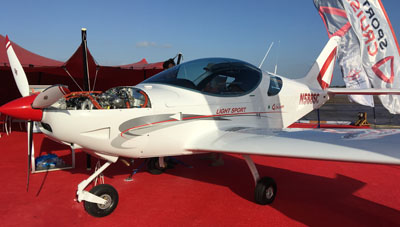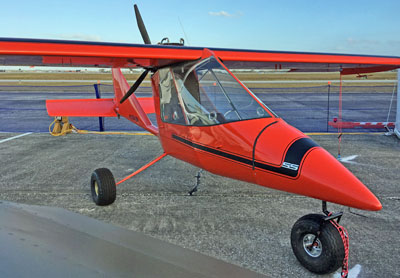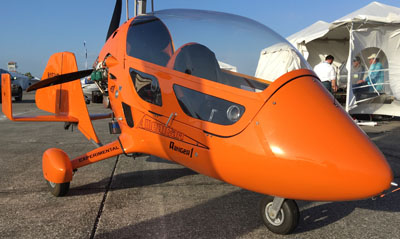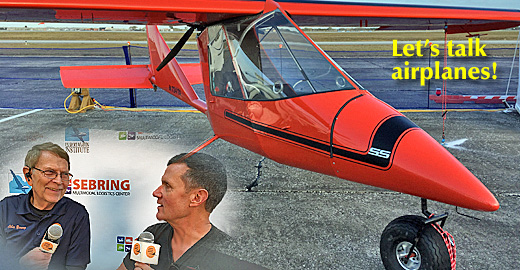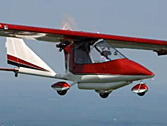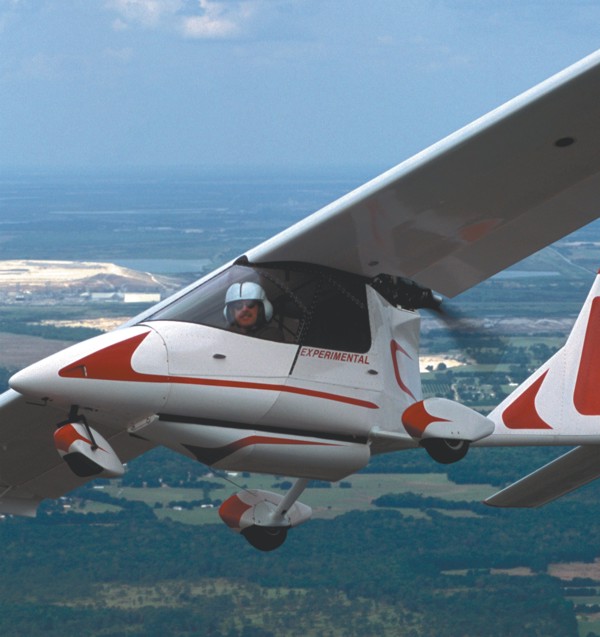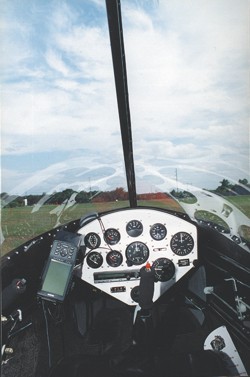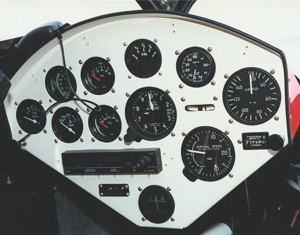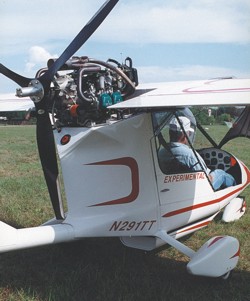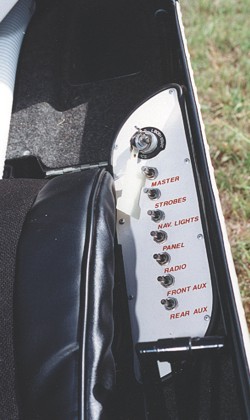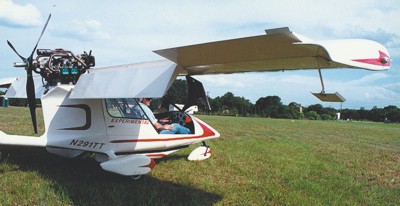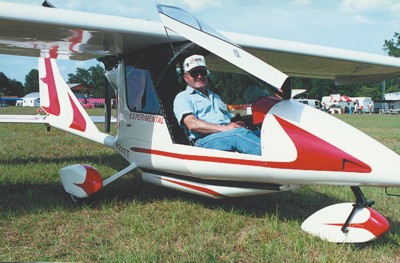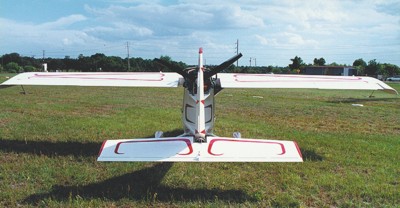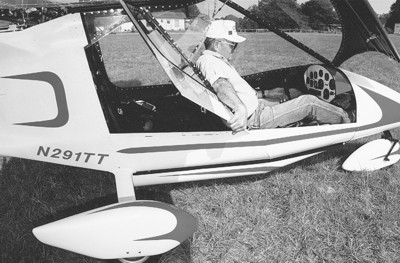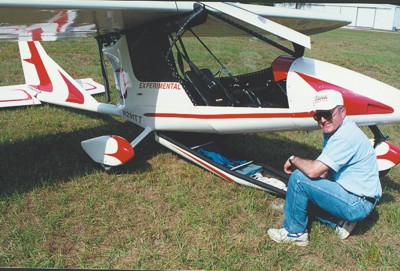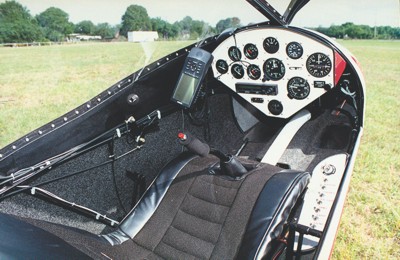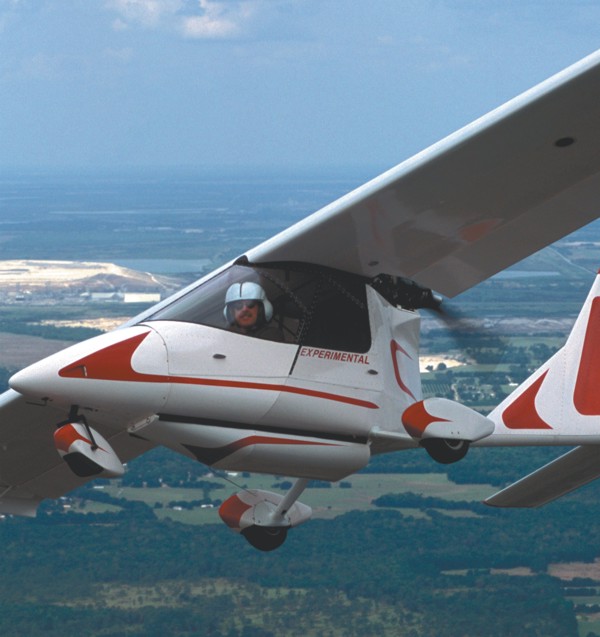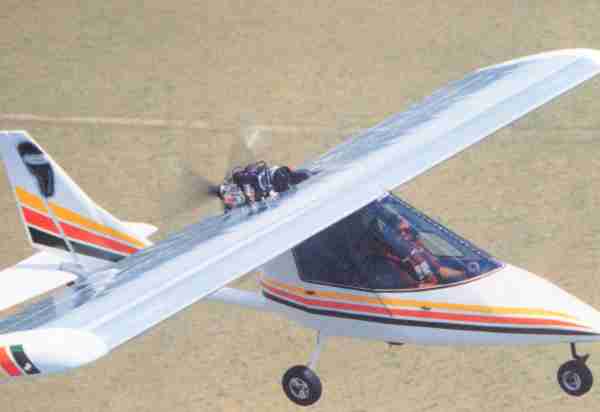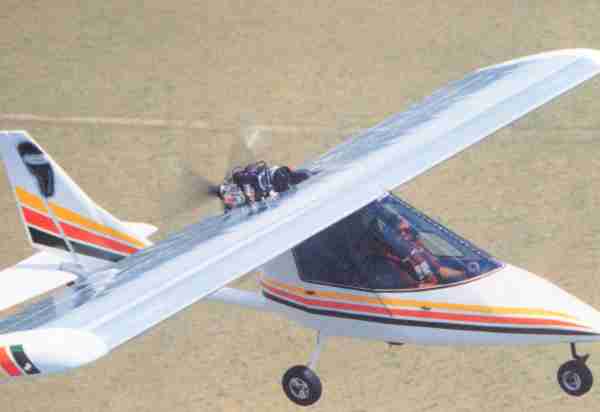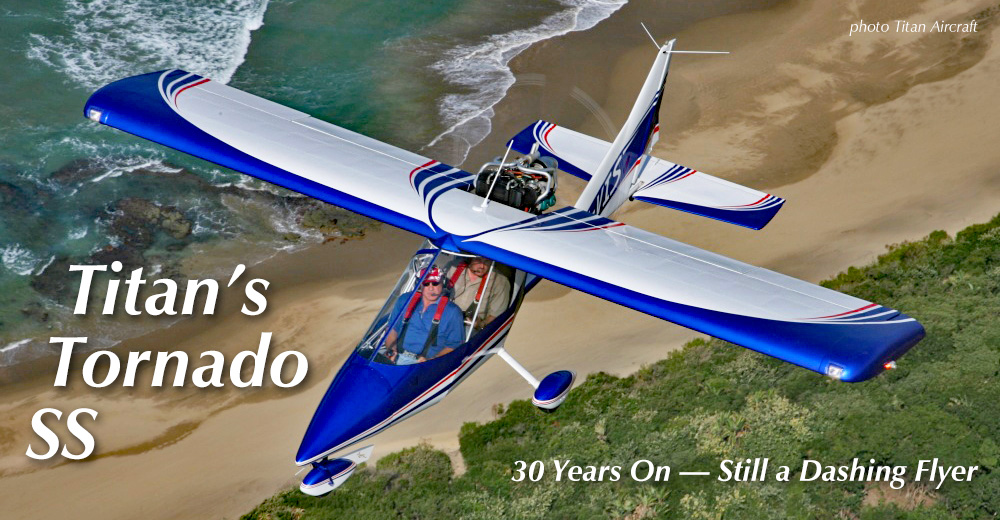
Usually, aviation journalists attending airshows seek the latest and greatest in aircraft. We love to find aircraft our readers have never seen and I’ve reported some of those in recent days. Today, however, I’m going to step back in time to an aircraft model series I have not covered in years. Titan Aircraft has become well known for their take on the ever-popular P-51 Mustang. In Titan’s case this resulted in the 75%-scale T-51 Mustang. You can read my different-than-usual report on that aircraft in this article. Yet the longtime Ohio producer also continues to make their dashing Tornado in four varieties. One of those, the SS or Super Stretch model is my focus. Titan Tornado SS “Super Stretch” Tornado started out as a single place aircraft back in the early days of FAA’s Part 103 regulation. That rule came out in fall of 1982 and a few years later, Titan got in the game with their 1+1 Tornado.


 Usually, aviation journalists attending airshows seek the latest and greatest in aircraft. We love to find aircraft our readers have never seen and I've reported some of those in recent days.
Today, however, I'm going to step back in time to an aircraft model series I have not covered in years.
Usually, aviation journalists attending airshows seek the latest and greatest in aircraft. We love to find aircraft our readers have never seen and I've reported some of those in recent days.
Today, however, I'm going to step back in time to an aircraft model series I have not covered in years.
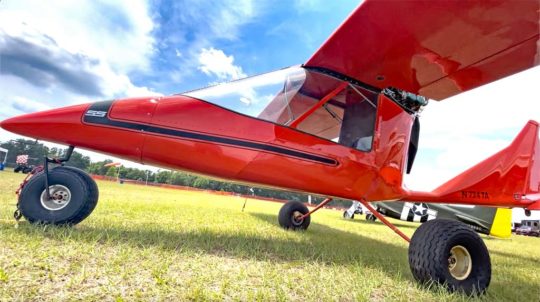 Before longtime proprietor John Williams began producing his own design, he manufactured components and sub-asssemblies for another hot ultralight of the day,
Before longtime proprietor John Williams began producing his own design, he manufactured components and sub-asssemblies for another hot ultralight of the day, 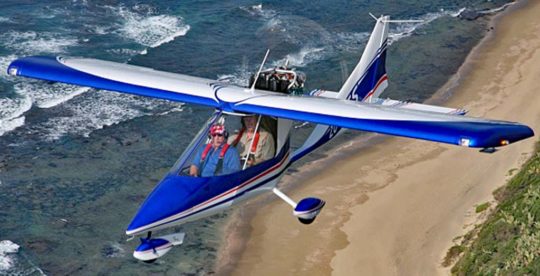 To make harder-working wings, John did something rather unusual at the time. He built a cantilevered wing with conventional aluminum structure. The result: that single place aircraft worked great with a 20-foot wing span. When I flew it, the wings seemed so short that I felt I could reach out with my arms and almost touch the tips.
John also noted that the tauter wing structure made the aircraft more responsive in handling. Tornado could and still can do loops and rolls with ease …in experienced hands, of course. I don't want to encourage anyone to do aerobatics without proper instruction.
To make harder-working wings, John did something rather unusual at the time. He built a cantilevered wing with conventional aluminum structure. The result: that single place aircraft worked great with a 20-foot wing span. When I flew it, the wings seemed so short that I felt I could reach out with my arms and almost touch the tips.
John also noted that the tauter wing structure made the aircraft more responsive in handling. Tornado could and still can do loops and rolls with ease …in experienced hands, of course. I don't want to encourage anyone to do aerobatics without proper instruction.
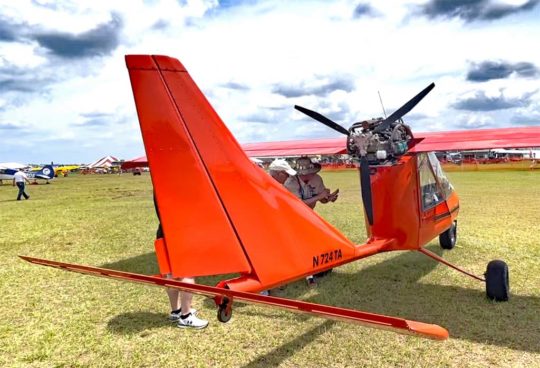 Titan went further on their website. "Combined with Titan Aircraft's renowned reputation for high quality products, superior aircraft performance, and outstanding customer support, Tornado is sure to provide the pilot and kit builder a very pleasurable experience and a fantastic resale value."
Obviously, Team Titan is proud of their achievement and, in support of those claims, more than 800 are flying, John reported at Sun 'n Fun 2021.
"I do spend more time with our T-51 these days but every time I take someone up in Tornado, I always get out with a smile on my face." As he said the words, his smile broaded with the memory.
Titan went further on their website. "Combined with Titan Aircraft's renowned reputation for high quality products, superior aircraft performance, and outstanding customer support, Tornado is sure to provide the pilot and kit builder a very pleasurable experience and a fantastic resale value."
Obviously, Team Titan is proud of their achievement and, in support of those claims, more than 800 are flying, John reported at Sun 'n Fun 2021.
"I do spend more time with our T-51 these days but every time I take someone up in Tornado, I always get out with a smile on my face." As he said the words, his smile broaded with the memory.
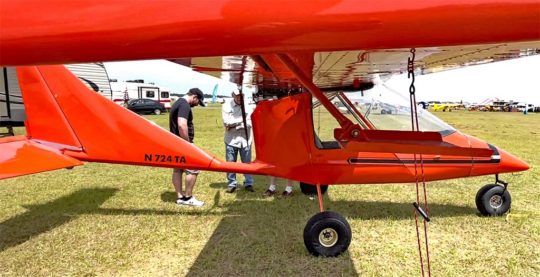
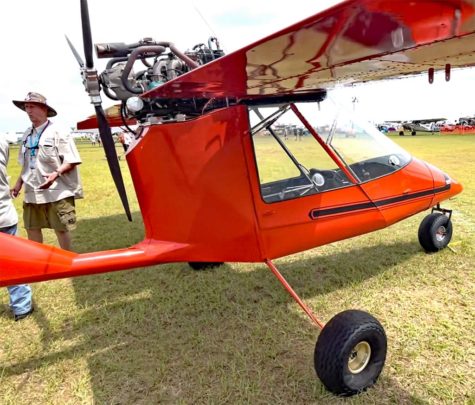 "Our kit has an estimated build time of 150-300 hours and includes all required materials, components, and fasteners," said John. Kits do not include engine, propeller, and instruments leaving that to customer preferences. "Our completion rate is around 90% because the build is fairly quick and easy — and because customers are motivated to get flying," John added.
"Tornado models combine friendly low-speed handling characteristics with agility and high performance," Titan observed on their website. Tornado I is designed to a +6g / -4g load limit capability at 750 pounds gross weight. With a Rotax 503 engine, cruise speed is in excess of 95 mph. The stall speed in landing configuration flying solo is 30 mph.
"Our kit has an estimated build time of 150-300 hours and includes all required materials, components, and fasteners," said John. Kits do not include engine, propeller, and instruments leaving that to customer preferences. "Our completion rate is around 90% because the build is fairly quick and easy — and because customers are motivated to get flying," John added.
"Tornado models combine friendly low-speed handling characteristics with agility and high performance," Titan observed on their website. Tornado I is designed to a +6g / -4g load limit capability at 750 pounds gross weight. With a Rotax 503 engine, cruise speed is in excess of 95 mph. The stall speed in landing configuration flying solo is 30 mph.
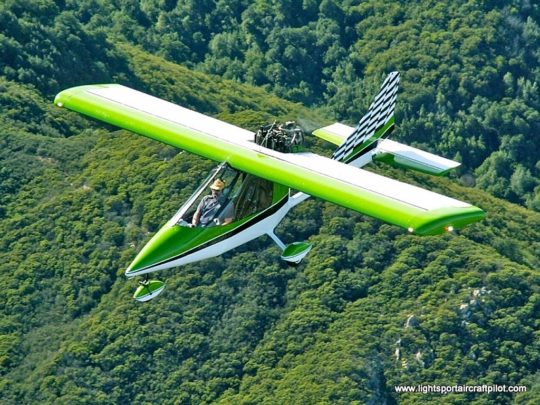 The Tornado SS comes with a longer & taller fuselage, a 33% larger back door, a full-sized rear seat, and has four more inches of headroom over a standard Tornado II. Most use the
The Tornado SS comes with a longer & taller fuselage, a 33% larger back door, a full-sized rear seat, and has four more inches of headroom over a standard Tornado II. Most use the 